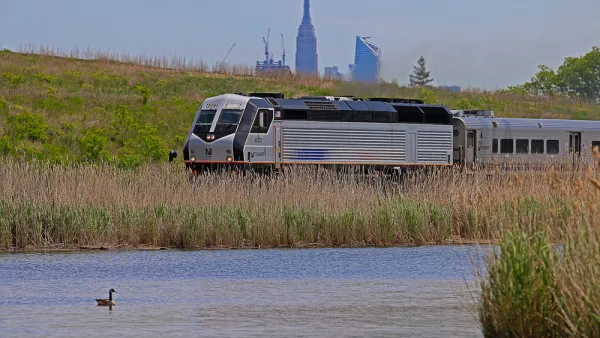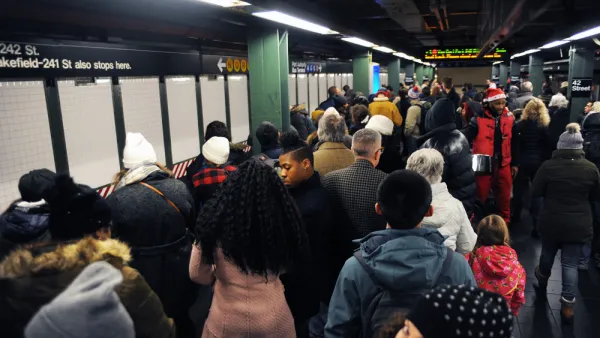WNYC's Andrea Bernstein speaks to "super-commuters", who travel regularly from home to work by air, and uncovers a new way of thinking about where we live and where we work.
The commuter mode split for New York City looks different in the most recent census than it did a decade ago. Notably, some 4,000 commuters hop a plane to work, a demographic that didn't even appear in previous census data. Director of NYU's Rudin Center, Mitchell Moss notes that this growing trend indicates a collapse of regional boundaries as distance is no longer seen as a barrier.
Major shifts in the economy and technology are driving the acceptance of regular air commuting. While much of the country has seen job loss, New York City is still full of high paying jobs. The cost of living in the City remains high, however, and, more importantly, home values elsewhere have fallen to the extent that many families that might have moved are stuck with homes they can't sell. Job insecurity is another justification for super-commuting, as families resist uprooting with each job change.
Advances in technology has also enabled air commuting. A variety of communication and social networking devices make it easier to stay connected to friends and family while traveling. Additionally, widespread internet access means people don't have to be at the office to connect to work. Super-commuter, Dave Gustafson, points out that he "never set(s) the ‘Out-of-Office' reply on my email. I'm never really out of the office."
Gustafson describes another benefit of his air commute which points to a shift in our concept of home, office and belonging to a place:
"Because I travel like this I'm not locked into living in a particular area. We're talking about relocating to another part of the country, and I don't have to find a new job, so long as I'm near an airport. We can pick our place."
Thanks to Jessica Brent
FULL STORY: Air Commuters Growing in Number

Analysis: Cybertruck Fatality Rate Far Exceeds That of Ford Pinto
The Tesla Cybertruck was recalled seven times last year.

National Parks Layoffs Will Cause Communities to Lose Billions
Thousands of essential park workers were laid off this week, just before the busy spring break season.

Retro-silient?: America’s First “Eco-burb,” The Woodlands Turns 50
A master-planned community north of Houston offers lessons on green infrastructure and resilient design, but falls short of its founder’s lofty affordability and walkability goals.

Test News Post 1
This is a summary

Analysis: Cybertruck Fatality Rate Far Exceeds That of Ford Pinto
The Tesla Cybertruck was recalled seven times last year.

Test News Headline 46
Test for the image on the front page.
Urban Design for Planners 1: Software Tools
This six-course series explores essential urban design concepts using open source software and equips planners with the tools they need to participate fully in the urban design process.
Planning for Universal Design
Learn the tools for implementing Universal Design in planning regulations.
EMC Planning Group, Inc.
Planetizen
Planetizen
Mpact (formerly Rail~Volution)
Great Falls Development Authority, Inc.
HUDs Office of Policy Development and Research
NYU Wagner Graduate School of Public Service



























